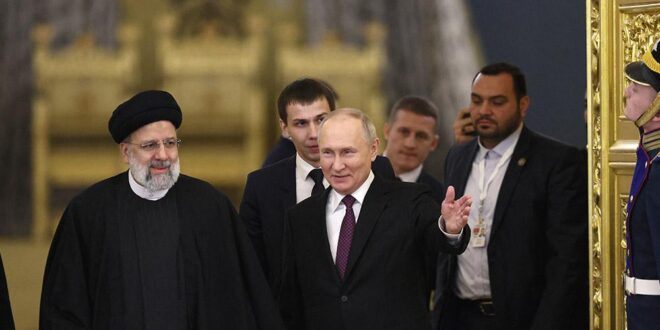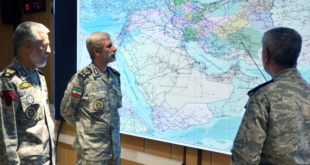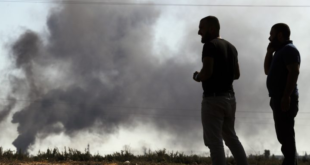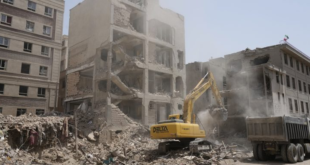We appear to be witnessing the emergence of a united front against Washington that extends from the Baltic Sea to the Persian Gulf.
There are many reasons why Russia and Iran are not formal allies. Their rulers don’t trust one another; they compete with each other on energy markets; and Iran’s revolutionary Shiite ideology sits uneasily with Russia’s conservatism. When it comes to military matters, however, they are drawing ever closer, united in their opposition to the United States.
For the moment, Moscow is playing a limited role in the ongoing conflict in the Middle East between Tehran and Washington. But the Kremlin has convinced itself that the United States is using Ukraine to wage a proxy war against Russia. And that means Russia likely believes it has every right to start a proxy war with the United States anywhere in the world, including the Middle East.
When it comes to drones, the cooperation between Russia and Iran is well known: there have been multiple media reports about the factory in Russia’s republic of Tatarstan that is producing Iranian unmanned aerial vehicles (UAVs). Significantly, Russia may soon take delivery of the new Iranian attack drone, the Shahed-101.
While Shahed-101s are smaller than previous models, which limits their payload, they can travel up to 600 kilometers, and their size means they are very difficult to identify—and shoot down. Shahed-101s are also simple to transport, and easy to launch unnoticed.
Amid the Israeli offensive in Gaza, there has been a rising number of attacks by Iranian-backed groups on U.S. targets in Iraq and Syria. Previously, these involved primitive rockets, but they are now routinely carried out using Shahed-101s. When a Shahed-101 hit a U.S. base on the border between Syria and Jordan on January 28, three U.S. soldiers were killed and over thirty wounded. The U.S. retaliated with strikes on Iran-backed groups across Iraq and Syria. But the Shahed-101 has shown it can evade U.S. air defenses.
Media reports suggest Iran will sell Russia several thousand Shahed-101s and the more advanced Shahed-107s. Moreover, the Tatarstan plant will also eventually start making these UAVs. While Iran-backed groups have used a maximum of two or three Shahed-101s at any one time in the Middle East, the Russian army will have the capacity to launch mass attacks in Ukraine—allowing the weapon to be tested and perfected.
All of this is evidence of how the military conflicts in Ukraine and the Middle East are increasingly intertwined, with military technologies being shared in both directions. Hamas has already knocked out Israeli tanks with quadcopters in Gaza, a tactic developed by Ukrainian and Russian soldiers. And Russia has agreed to supply Iran with military aviation: both fighter jets and helicopters.
Having shown they’re capable of evading U.S. air defenses in the Middle East, Iranian attack drones will now be tested against the U.S. systems used by Ukraine. This is why Israel is in no hurry to share its Iron Dome air defense system with Ukrainians: Iran is studying how its drones perform in Ukraine, and will be able to start identifying weak spots in the air defense systems they are up against.
Crucially, Moscow and Tehran believe they have a common enemy in Washington. Russian officials have stated repeatedly that Russian troops are fighting the United States in Ukraine, while for Iran, the slogan “Death to America!” has been part of its official ideology for decades. According to Iranian logic, Israel is just a U.S. outpost in the Middle East.
For the moment, the most visible Russian-Iranian cooperation against the United States in the Middle East has been in Syria. While pro-Iran groups launch rockets at U.S. targets, Russian jets harry U.S. air assets, carrying out dangerous maneuvers against U.S. planes and drones.
There are plenty of opportunities to expand this cooperation. After all, Russia’s foreign policy is often based on the principle of “anything the U.S. can do, we can do too.” Moscow’s recognition of the breakaway South Caucasus regions of Abkhazia and South Ossetia, its support for separatists in Ukraine, and the full-scale invasion of Ukraine in 2022 have all been justified by the Kremlin as being similar to previous U.S. actions. If Russian officials believe the United States is fighting a proxy war against Russia in Ukraine, logic dictates that it has the right to start its own proxy war against the United States anywhere in the world.
The Middle East would be the most obvious place to ignite such a conflict. Not only does anti-American feeling run high there, but Washington’s current position is ambiguous; U.S. forces appear vulnerable (as demonstrated by the recent attacks by Iran-backed groups); and Russia already has military infrastructure in the region—in Syria, and a convenient partner—Iran.
The exchange of technology, data, and experience between Tehran and Moscow and their close coordination in their fight against Washington has been mutually beneficial. Every strike by Iranian-backed groups on U.S. military targets is notched up by Moscow as a success, and every drone launched against U.S. air defenses is a source of data that can be used to identify U.S. weak spots. We appear to be witnessing the emergence of a united front against Washington, from the Baltic Sea to the Persian Gulf.
For the moment, the fight against the United States in the Middle East is taking place without Russia’s direct involvement. We have not seen Iranian-backed groups receiving large volumes of Russian weapons. But if the Ukraine conflict is frozen or becomes less intense, the chances of Russia ramping up its involvement in the Middle East will rise. Russia’s booming defense industry and the high numbers of Russian troops with battlefield experience could easily be channeled to the Middle East. Russian soldiers and arms would only be welcomed by pro-Iran groups keen to intensify their struggle against “U.S. neocolonialism.”
 Eurasia Press & News
Eurasia Press & News




